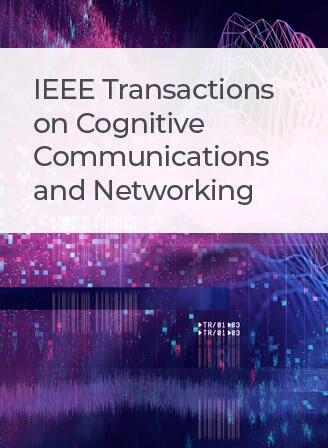利用深度强化学习实现基于痕迹信息素的高能效无人机动态覆盖
IF 7.4
1区 计算机科学
Q1 TELECOMMUNICATIONS
IEEE Transactions on Cognitive Communications and Networking
Pub Date : 2024-01-05
DOI:10.1109/TCCN.2024.3350590
引用次数: 0
摘要
无人飞行器(UAV)被广泛应用于灾害或偏远地区,以提供无处不在的服务。由于无人机的能量和通信距离有限,而且无人机的运行具有很大的不确定性,目前的覆盖路径规划算法还不够完善。因此,自主动态高能效路径规划仍是提高覆盖效率的重要研究方向,尤其是涉及多机器人的路径规划。针对这一问题,我们将一种新颖的轨迹信息素引入多代理强化学习框架,实现无人机高能效动态覆盖控制,即基于轨迹信息素的无人机高能效动态覆盖(TP-EDC)。首先,我们将多代理深度确定性策略梯度(MADDPG)与微量信息素模型相结合,作为构建 TP-EDC 框架的有力工具。同时,将踪迹信息素模型集成到 stigmergy 机制中以模拟自然信息素,从而增强了分布式无人机之间的内部间接通信,避免了网络延迟。最后,密集的仿真结果表明,所提出的方法能够综合考虑覆盖率和能耗,最大限度地提高覆盖效率。与两种著名的基线方法相比,我们的方法还显示出显著的动态覆盖性能。本文章由计算机程序翻译,如有差异,请以英文原文为准。
Trace Pheromone-Based Energy-Efficient UAV Dynamic Coverage Using Deep Reinforcement Learning
Unmanned aerial vehicles (UAVs) are widely used in disaster or remote areas to provide ubiquitous service. Due to the limited energy and communication range of UAVs, and the operation of UAVs is subject to high uncertainty, current coverage path planning algorithms are not sufficient. Therefore, autonomous dynamic and energy-efficient path planning is still an important research direction for improving coverage efficiency, especially involving multiagent. To address this problem, we introduce a novel trace pheromone into multi-agent reinforcement learning framework for energy-efficient UAV dynamic coverage control, which is termed trace pheromone-based UAV energy-efficient dynamic coverage (TP-EDC). First, we combine multi-agent deep deterministic policy gradient (MADDPG) with a trace pheromone model to serve as a strong tool for building our TP-EDC framework. Meanwhile, the trace pheromones model is integrated into stigmergy mechanism to simulate natural pheromones, which enhances the inner indirect communications among distributed UAVs and avoids network delay. Finally, the intensive simulation results demonstrate that the proposed method can maximize the coverage efficiency by comprehensively considering the coverage rate and energy consumption. Our method also shows significant dynamic coverage performance compared to two well-known baselines methods.
求助全文
通过发布文献求助,成功后即可免费获取论文全文。
去求助
来源期刊

IEEE Transactions on Cognitive Communications and Networking
Computer Science-Artificial Intelligence
CiteScore
15.50
自引率
7.00%
发文量
108
期刊介绍:
The IEEE Transactions on Cognitive Communications and Networking (TCCN) aims to publish high-quality manuscripts that push the boundaries of cognitive communications and networking research. Cognitive, in this context, refers to the application of perception, learning, reasoning, memory, and adaptive approaches in communication system design. The transactions welcome submissions that explore various aspects of cognitive communications and networks, focusing on innovative and holistic approaches to complex system design. Key topics covered include architecture, protocols, cross-layer design, and cognition cycle design for cognitive networks. Additionally, research on machine learning, artificial intelligence, end-to-end and distributed intelligence, software-defined networking, cognitive radios, spectrum sharing, and security and privacy issues in cognitive networks are of interest. The publication also encourages papers addressing novel services and applications enabled by these cognitive concepts.
 求助内容:
求助内容: 应助结果提醒方式:
应助结果提醒方式:


